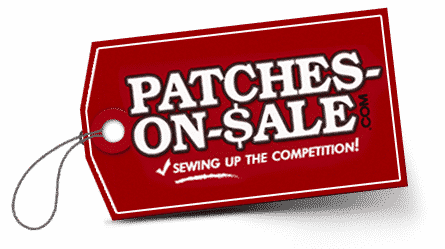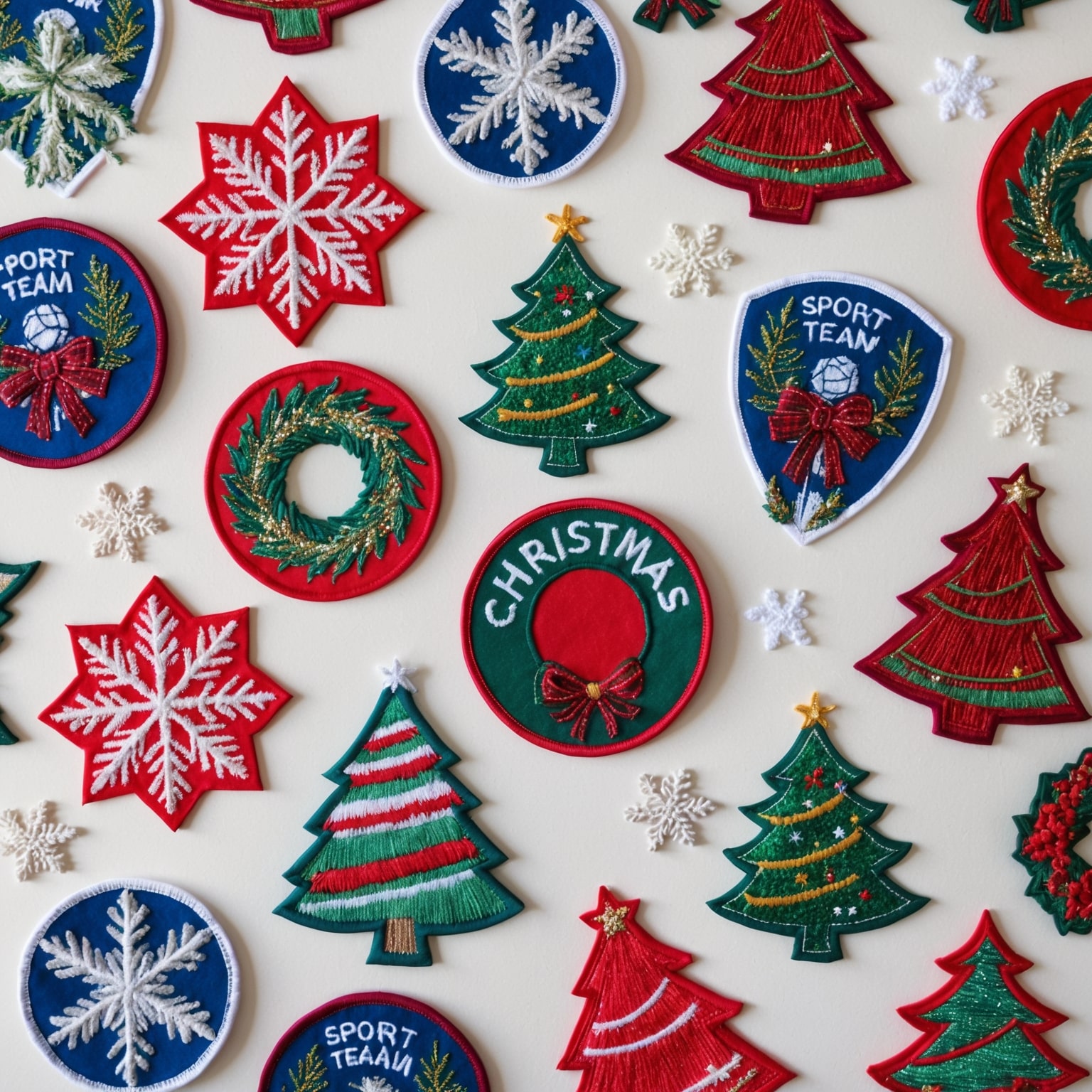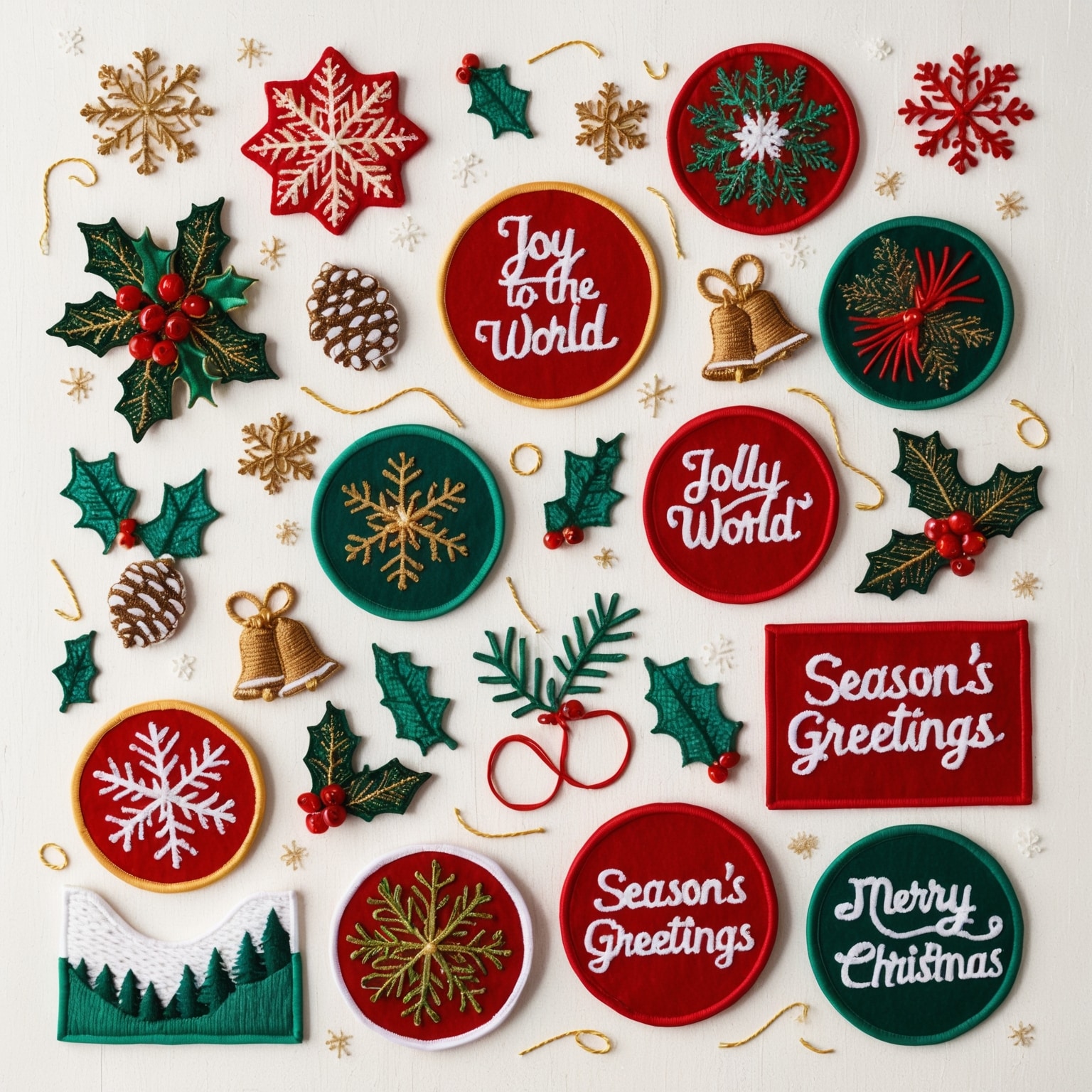In the world of fashion, brand identity is everything. From logos to the choice of fabric, every element of a fashion label speaks volumes about its ethos, values, and creative direction. One of the most compelling ways for fashion labels to communicate their philosophies is through custom patches. These small yet powerful fabric adornments have long been a part of the fashion landscape, symbolizing everything from rebellion and subculture to heritage and craftsmanship.
Custom patches offer a tangible way for fashion brands to express their identity. They can transform a simple garment into a statement piece, showcase a brand’s commitment to sustainability, or reflect the artistry and cultural inspirations behind a collection. In an industry where visuals are paramount, custom patches act as badges of belonging, creativity, and belief.
This article explores how custom patches are becoming a key tool for fashion brands to convey their philosophies, from streetwear to luxury labels. We’ll dive into the history of patches in fashion, the diverse ways patches can be used to express brand values, and how they connect with consumers on a deeper level.
The History of Patches in Fashion
To understand how custom fashion patches have become a vehicle for expressing brand identity, it’s important to first explore their origins in fashion. Patches have a rich history, dating back centuries, where they served both functional and decorative purposes.
Military Origins and Utility
The earliest known use of patches can be traced to military uniforms. Soldiers often wore patches to signify rank, unit affiliation, and achievements. Over time, patches evolved to communicate pride, honor, and solidarity within military ranks. The functionality of patches in this setting—both as practical identifiers and symbols of belonging—translated well into civilian life, especially in workwear and uniforms.
Patches in Subcultures: From Rebellion to Identity
In the 20th century, custom patches began to take on new meanings, particularly in subcultures that sought to break away from mainstream fashion. The punk movement of the 1970s embraced patches as a way to make political statements and express rebellion. Denim jackets and leather vests were often adorned with bold patches that represented the wearer’s identity, musical preferences, or political affiliations.
Patches also found a home in the biker community, where they became synonymous with loyalty to motorcycle clubs. Each patch was a badge of honor, reflecting a rider’s connection to their club, the miles they’d traveled, or their personal journey. These communities helped solidify the idea of patches as symbols of personal identity and affiliation.
Patches in High Fashion
While custom patches have long been a staple in subcultural fashion, high fashion began to embrace patches as well. In the 1980s and 1990s, designers like Jean-Paul Gaultier and Vivienne Westwood incorporated patches into their avant-garde designs, giving a nod to punk and street culture. Today, brands ranging from luxury labels like Gucci to contemporary streetwear lines use custom patches to add a layer of storytelling to their garments.
How Custom Patches Can Signify Fashion Label Philosophies
For fashion brands, custom patches are more than just embellishments—they are storytelling devices that convey deeper meanings about the brand’s ethos, values, and identity. Through thoughtful design, material choice, and placement, patches can communicate the philosophy of a fashion label, whether it’s a commitment to sustainability, a connection to cultural heritage, or a bold stance on social issues.
Here are some of the key ways fashion labels use custom patches to signify their brand philosophies:
1. Storytelling and Narrative
At the heart of any fashion label is a story. Whether it’s a heritage brand with deep roots in craftsmanship or a modern streetwear label inspired by urban culture, storytelling plays a key role in shaping the brand’s identity. Custom patches offer a unique canvas for brands to tell these stories visually.
- Heritage and Craftsmanship: For heritage brands, patches can be used to highlight a label’s long history and tradition. A patch that features a brand’s founding year, iconic motifs, or artisanal symbols can evoke a sense of authenticity and craftsmanship. For example, a brand that prides itself on handmade, high-quality products might use embroidered patches to showcase the artisanal skills behind each piece.
- Pop Culture and Urban Influences: Contemporary fashion brands often draw inspiration from pop culture, music, and street art. Custom patches can be used to reflect these influences, creating a connection between the brand and youth culture. Patches featuring graffiti-style artwork, pop art icons, or street-inspired graphics give garments an edgy, urban feel that resonates with younger audiences.
- Political and Social Statements: In recent years, many fashion brands have embraced activism, using their platforms to raise awareness of social and political issues. Custom patches are an effective way to make bold statements about causes such as gender equality, environmentalism, or racial justice. A patch with a powerful slogan or symbol can turn a simple jacket or hat into a walking billboard for the brand’s values.
2. Sustainability and Ethical Practices
Sustainability is no longer a trend in fashion—it’s a necessity. As consumers become more conscious of the environmental and ethical impact of their purchases, fashion brands are under increasing pressure to adopt sustainable practices. Custom patches can be a powerful tool for brands to highlight their commitment to sustainability.
- Upcycling and Reuse: Many eco-conscious fashion labels incorporate patches into upcycled or repurposed clothing. By using custom patches to cover imperfections or give new life to old garments, brands can reduce waste and promote a circular economy. A patch that features a message about sustainability or symbols of nature can reinforce the brand’s eco-friendly philosophy.
- Natural and Recycled Materials: The materials used in patches can also reflect a brand’s commitment to sustainability. For example, labels might choose to use organic cotton, recycled polyester, or natural dyes for their custom patches, ensuring that every element of the garment aligns with their eco-friendly ethos. This level of detail demonstrates to consumers that the brand takes sustainability seriously.
- Highlighting Ethical Production: Brands that focus on ethical production practices can use custom patches to communicate this message to their customers. Patches that include phrases like “Fair Trade” or “Handmade with Care” help differentiate the brand in a crowded market, making its values clear.
3. Cultural Heritage and Identity
Fashion has always been a way to express cultural heritage, and custom patches offer a unique medium for brands to incorporate cultural references into their designs. Whether inspired by a brand’s own origins or a celebration of diverse global influences, patches can connect garments to specific cultural stories and traditions.
- Traditional Patterns and Motifs: Many fashion labels draw on traditional patterns, symbols, and motifs from different cultures. A custom patch designed with these elements can serve as an homage to the culture that inspired the collection. For example, a brand influenced by Native American art might create patches featuring geometric patterns or tribal symbols, paying tribute to Indigenous cultures.
- Global Influences: In today’s globalized world, many fashion brands blend influences from multiple cultures. Custom patches can be used to reflect this fusion, showcasing elements from different regions in a cohesive design. For example, a collection inspired by both Japanese and African aesthetics could feature patches that combine traditional Japanese embroidery techniques with vibrant African prints.
- Personal and Community Identity: For smaller or niche fashion labels, custom patches can reflect the personal stories or the community behind the brand. A label that centers around LGBTQ+ pride, for instance, might create patches with symbols such as the rainbow flag or other imagery that resonates with the community. These patches can serve as statements of identity, belonging, and solidarity.
4. Exclusive Collaborations and Limited-Edition Collections
Many fashion brands create buzz through exclusive collaborations or limited-edition drops. In these cases, custom patches are often used to signify the uniqueness of a collaboration, making the garment or accessory more desirable to collectors and fashion enthusiasts.
- Limited-Edition Patches: For a limited-edition collection, custom patches can emphasize the exclusivity of the product. A patch that features the collaboration partner’s logo alongside the brand’s logo, or one that includes a limited-edition number, makes the piece feel rare and collectible. Streetwear brands, in particular, have embraced this strategy, using patches as a key feature of their limited-edition offerings.
- Artist Collaborations: When fashion brands collaborate with visual artists, custom patches become an ideal medium for showcasing the artist’s work. Patches featuring original artwork by the collaborating artist can be sewn onto jackets, bags, or hats, turning each garment into a wearable canvas. This not only enhances the artistic appeal of the piece but also aligns the brand with creativity and innovation.
- Brand Partnerships: Custom patches can also signify collaborations between fashion brands and other companies or organizations. For example, a collaboration between a fashion label and a luxury car company might result in a limited-edition collection featuring patches that combine the brand’s signature style with the carmaker’s logo or design elements. These collaborations enhance the appeal of the product and broaden the brand’s reach.
5. Reinforcing Brand Loyalty and Identity
Fashion brands thrive on loyal customers who not only love the products but also resonate with the brand’s values and identity. Custom patches can help strengthen this connection by acting as wearable symbols of belonging, allowing customers to feel like they are part of an exclusive community.
- Brand Logos and Iconography: Many brands incorporate their logo into their custom patches, creating a visual signature that’s instantly recognizable. A patch featuring a brand’s logo can elevate the perceived value of a garment, turning it into a statement piece that communicates the wearer’s loyalty to the brand. Iconic luxury brands like Gucci and Louis Vuitton frequently use patches with their logos as key design elements, while streetwear labels use logo patches to cement their place in urban culture.
- Membership and Exclusivity: Some brands create patches as part of a loyalty or membership program. For example, a high-end fashion label might offer exclusive patches to their VIP customers, making them feel like part of an elite group. These patches can be sewn onto a garment or accessory, instantly signaling the wearer’s connection to the brand and its community. In the streetwear world, limited-edition patches often serve as status symbols, worn proudly by fans of the brand.
- Customization and Personalization: Custom patches also provide an opportunity for brands to offer personalization options for their customers. Fashion labels can create customizable patches where customers can add their initials, names, or other personal details. This personalized approach allows consumers to take ownership of the garment, reinforcing their personal connection to the brand.
Designing Custom Patches: Key Considerations for Fashion Labels
Designing custom patches that effectively convey a brand’s philosophy requires a thoughtful approach to several factors, from material choice to aesthetic design. Here are the key considerations fashion labels should keep in mind when creating custom patches:
1. Material and Technique
The choice of material and technique used to create custom patches significantly impacts their aesthetic and durability. Here are some common materials and techniques used in fashion patches:
- Embroidered Patches: These are among the most popular types of patches, known for their texture and depth. Embroidered patches are created by stitching designs onto fabric, which gives the patch a raised, three-dimensional look. They’re ideal for fashion labels that want to convey a sense of craftsmanship and quality.
- Woven Patches: Woven patches are similar to embroidered patches but use thinner threads, resulting in a smoother, more detailed finish. Woven patches work well for designs with intricate details or small text, making them a great option for fashion labels that want a more refined, polished look.
- Printed Patches: For brands with more complex designs or photographic images, printed patches offer a high level of detail. These patches are created by printing the design directly onto fabric, resulting in a flat, smooth surface. Printed patches are ideal for brands that want to showcase artwork or graphic designs in vibrant colors.
- Chenille Patches: Known for their fuzzy texture, chenille patches are often associated with varsity jackets and sportswear. They are made from looped yarns that create a soft, plush surface. Fashion labels that draw inspiration from athletic or collegiate styles might opt for chenille patches to add texture and nostalgia to their designs.
- Leather or Faux Leather Patches: For a more upscale or rugged look, leather or faux leather patches can be used. These patches are durable and offer a sleek, sophisticated aesthetic, making them a popular choice for outerwear and accessories. They can be embossed or debossed with a brand’s logo or design, adding a touch of luxury to the garment.
2. Size and Placement
The size and placement of custom patches on a garment can significantly affect the overall impact of the design. Consider the following when deciding on size and placement:
- Large, Statement Patches: Large patches can serve as the focal point of a garment, making a bold statement. These are often placed on the back of jackets, vests, or sweaters, creating a visually striking piece that instantly draws attention. Large patches are ideal for designs that carry significant detail or messaging, such as brand logos, artwork, or slogans.
- Small, Subtle Patches: Smaller patches can be used as accent details, adding subtle branding or decoration to a garment. For example, a small logo patch on the chest of a shirt or sleeve of a jacket can reinforce brand identity without overwhelming the design. These patches are often placed on pockets, sleeves, or near the hemline of a garment for a more understated look.
- Patch Placement in Creative Locations: While most patches are placed in traditional locations like the chest, back, or sleeves, fashion labels can experiment with more unconventional placements. For example, patches can be sewn onto the collar, cuffs, or even along the side seams of pants. Creative placement adds an element of surprise and originality to the garment, setting it apart from more traditional designs.
3. Color and Design
The color and design of custom patches should align with the overall aesthetic of the fashion label and collection. Here are a few key design considerations:
- Brand Colors: Incorporating a brand’s signature colors into the patch design helps reinforce brand identity. Whether the patch features the label’s logo or a more abstract design, using the brand’s color palette ensures consistency across the collection.
- Contrast or Complementary Colors: When designing patches for a specific garment, consider whether the patch should contrast or complement the fabric. A brightly colored patch on a neutral-toned jacket will stand out, creating a focal point, while a patch in complementary colors can blend seamlessly with the garment for a more cohesive look.
- Typography and Fonts: If the patch includes text, such as a brand slogan or logo, choosing the right font is crucial. The typography should reflect the brand’s overall style—whether it’s modern and minimalist or vintage and ornate. For streetwear brands, bold, graffiti-style fonts can add an edgy feel, while luxury brands might opt for elegant serif fonts.
4. Manufacturing and Production
Choosing the right manufacturer is essential when creating custom patches. Brands should look for manufacturers who offer high-quality materials and precision craftsmanship, as this will ensure that the patches not only look great but also stand the test of time.
Here are some tips for working with manufacturers:
- Request Samples: Before placing a large order, request samples from the manufacturer to ensure that the materials, colors, and stitching meet your standards. This also gives you the opportunity to see how the patch will look on the actual garment.
- Provide Detailed Design Files: When working with a manufacturer, it’s important to provide detailed design files that include clear specifications for size, colors, thread types, and placement. This will help avoid any miscommunication and ensure that the final product matches your vision.
- Consider Lead Times: Custom patches require time to produce, especially if they involve complex designs or materials. Be sure to account for lead times when planning your collection’s release, and communicate any deadlines clearly with the manufacturer.
Patches as a Canvas for Brand Philosophy
In an increasingly competitive fashion landscape, custom patches offer a distinctive way for fashion labels to communicate their philosophies. Whether expressing a commitment to sustainability, celebrating cultural heritage, or creating bold statements through collaborations, patches are much more than just embellishments—they are a visual language that speaks directly to the brand’s audience.
By thoughtfully designing and using custom patches, fashion labels can elevate their garments, creating pieces that are not only beautiful but also meaningful. As both fashion and consumers continue to evolve, custom patches will remain a versatile and powerful tool for brands looking to convey their values, creativity, and identity.
If you are interested in purchasing high-quality custom patches, feel free to call us at 1-877-503-8485 or fill out one of our FREE quotes here.




